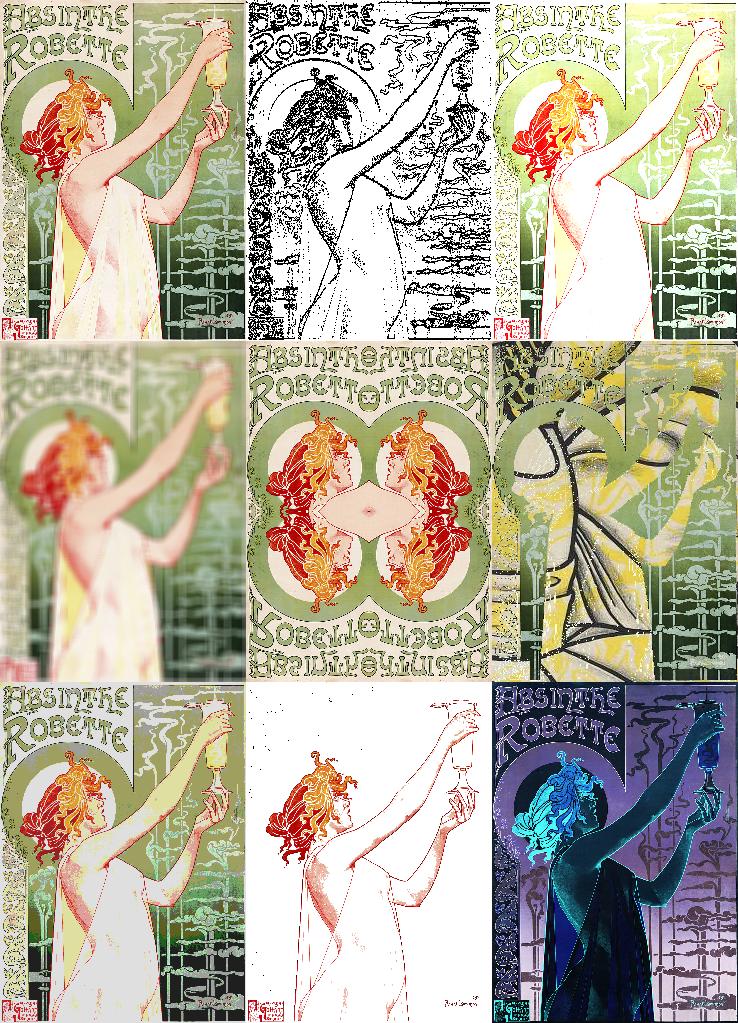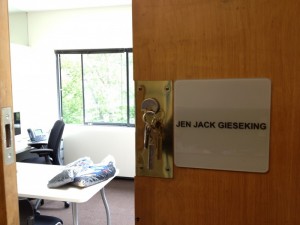Dana Hopkins ’14 is majoring in art history and visual arts. Professor Crystal Hall recently spoke with her about her experience of taking the Gateway for Digital Humanities course.
Why are you taking the Gateway course?
 I have great respect for Professor Fletcher and knew that I liked her teaching style from experience in previous courses with her, and I had heard wonderful things about Professor Chown through some friends who did Robocup under his guidance. Beyond that, the subject matter of digital humanities itself and the professional opportunities it presents are very appealing to me. I love discovering how seemingly opposite disciplines may intersect to create surprising and intriguing results. I love how the confrontations between fields leads to innovation, how it requires problem solving and creativity. I love trying on another perspective for size and attempting to read the world through computational thinking rather than what I’ve previously been exposed to.
I have great respect for Professor Fletcher and knew that I liked her teaching style from experience in previous courses with her, and I had heard wonderful things about Professor Chown through some friends who did Robocup under his guidance. Beyond that, the subject matter of digital humanities itself and the professional opportunities it presents are very appealing to me. I love discovering how seemingly opposite disciplines may intersect to create surprising and intriguing results. I love how the confrontations between fields leads to innovation, how it requires problem solving and creativity. I love trying on another perspective for size and attempting to read the world through computational thinking rather than what I’ve previously been exposed to.
I also wanted to take a class that was outside of my norm. For the past two years I’ve almost exclusively taken visual arts and art history classes in order to complete my major requirements. It’s nice to have a class where I feel that I can bring something very useful to the table (in this case a very visually-based and subjective view on the world) to something that is outside of my major. I also felt like it would start me on my way to obtaining a skill set that will become increasingly useful in our media-driven modern world and help me be more marketable as I prepare to leave Bowdoin in the spring.
What has surprised you in the seminar so far?
The mix of students in the class is really neat to me. We seem to come from all different kinds of backgrounds (visual arts, art history, comp sci, English, biology, mathematics) and from all different class years. This leads to the conversations in class going places that I would never expect them to, and I really enjoy that.
It’s also surprised me how much I like programming. I’m not particularly good at it yet, but starting to understand what kind of work goes into all the technology that I so easily take for granted has been very eye-opening and humbling for me.
Do you have any early ideas about your final project?
I am thinking about making a deep map of Bowdoin, probably primarily based on architectural changes throughout the College’s history, but also linking it to testimonials from current students and historical primary sources regarding famous alums such as Longfellow and Hawthorne. I would like to make it an app, if possible, and link it to GPS coordinate-tracking systems so that prospective students (and current students and alums alike) could access it and experience the history of Bowdoin as they walk around campus. Not only would this be a nice way for people to become more connected to the College, but it would also be an opportunity for me to dig deeply into Bowdoin’s Special Collections and thereby better appreciate the treasure-trove that is housed there.


